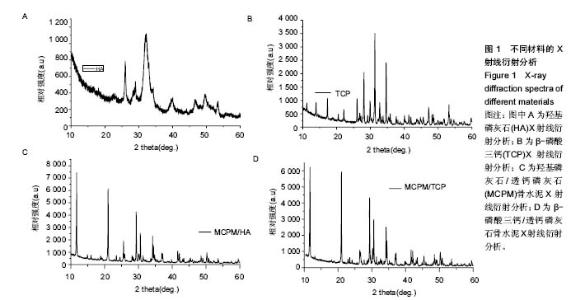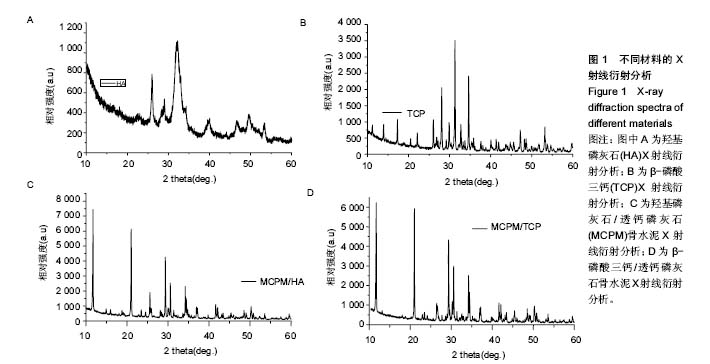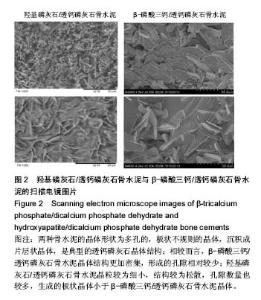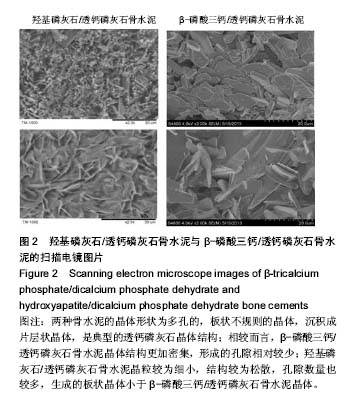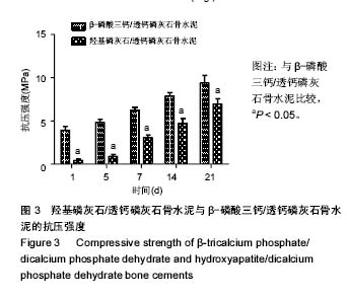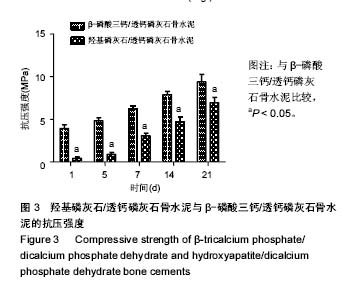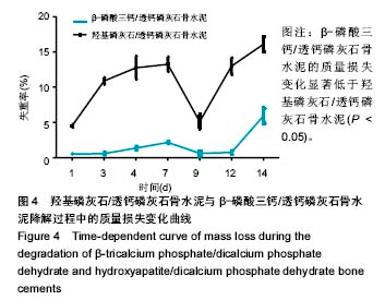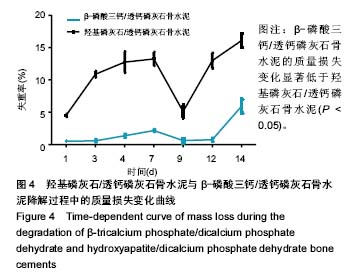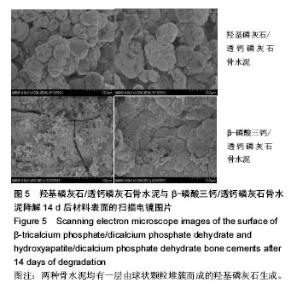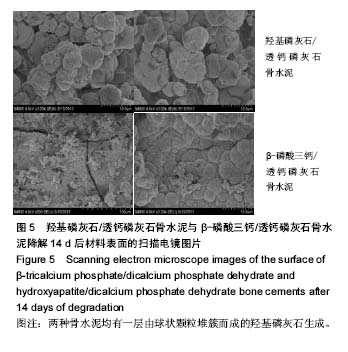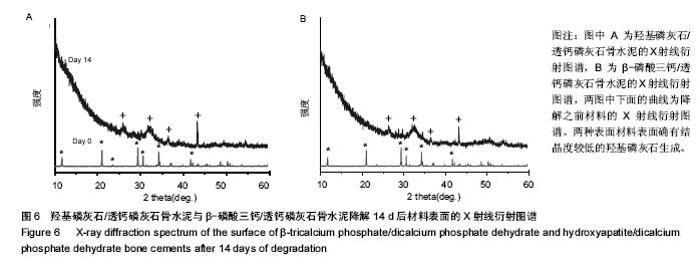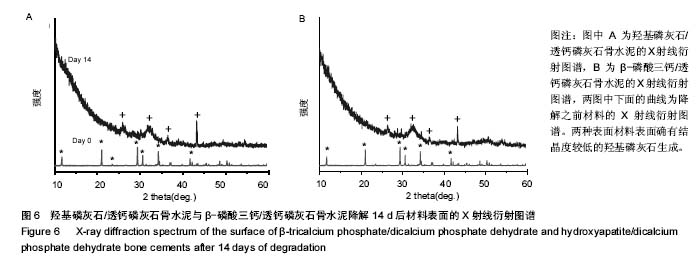| [1]Stafford PR,Norris BL.Reamer-irrigator-aspirator bone graft and bi Masquelet technique for segmental bone defect nonunions: a review of 25 cases.Injury.2010;41 Suppl 2:S72-77. [2]Le Nail LR,Stanovici J,Fournier J,et al.Percutaneous grafting with bone marrow autologous concentrate for open tibia fractures: analysis of forty three cases and literature review.Int Orthop. 2014;38(9):1845-1853.[3]Giannoudis PV,Dinopoulos H,Tsiridis E.Bone substitutes: an update. Injury.2005;36(3):20-27.[4]4 Lerner T,Griefingholt H,Liljenqvist U.Bone substitutes in scoliosis surgery.Der Orthopde.2009;38(2):181-188.[5]张浩.无定形磷酸钙对渗透树脂渗透性、颜色稳定性及显微硬度的影响[D].南京大学,2015.[6]周秋娟,梁永强,李淑静,等.掺锶透钙磷石骨水泥修复家兔牙槽骨缺损的研究[J].安徽医科大学学报,2017,52(4):589-592. [7]Mirtchi AA,Lemaître J,Munting E.Calcium phosphate cements: study of the beta-tricalcium phosphate-dicalcium phosphate-calcite cements.Biomaterials.1990;11(2):83-88.[8]Grover LM,Knowles JC,Fleming GJP,et al.In vitro ageing of brushite calcium phosphate cement. Biomaterials.2003;24(23):4133-4141.[9]孙明林,胡蕴玉.磷酸钙骨水泥的研究和应用进展[J].中华骨科杂志, 2002,22(1):49-52.[10]Tung MS,Chow LC,Brown WE.Hydrolysis of dicalcium phosphate dihydrate in the presence or absence of calcium fluoride.J Dent Res.1985;64(1):2-5.[11]Chow LC.Calcium phosphate materials: reactor response.Adv Dent Res.1988;2(1):185-186.[12]Nilsson M,Fernández E,Sarda S,et al.Characterization of a novel calcium phosphate/sulphate bone cement.J Biomed Mater Res A.2002;61(4):600-607.[13]Mirtchi AA,Lemaître J,Munting E.Calcium phosphate cements: study of the beta-tricalcium phosphate--dicalcium phosphate--calcite cements.Biomaterials.1990;11(2):83-88.[14]Vereecke G,Lemaître J.Calculation of the solubility diagrams in the system Ca(OH) 2 -H 3 PO 4 -KOH-HNO 3 -CO 2 -H 2 O.J Crys Growth.1990;104(4):820-832.[15]Gisep A,Wieling R,Bohner M,et al.Resorption patterns of calcium- phosphate cements in bone. J Biomed Mater Res A. 2003;66(3):532-540.[16]Mariño FT,Torres J,Hamdan M,et al.Advantages of using glycolic acid as a retardant in a brushite forming cement.J Biomed Mater Res B Appl Biomater.2007;83(2):571-579.[17]Barralet JE,Tremayne M,Lilley KJ, et al.Modification of Calcium Phosphate Cement with α-Hydroxy Acids and Their Salts.Chem Mater.2005;17(6):1313-1319.[18]杨迪诚,钟建,刘涛,等.透钙磷石骨水泥制备及其载药性能[J].中国组织工程研究,2015,19(3):427-433. [19]漆小鹏,李文,罗远方,等.新型钇-羟基磷灰石骨水泥的制备及性能研究[J].材料导报,2017,31(13):151-155. [20]Bohner M,Merkle HP.In vitro aging of a calcium phosphate cement.J Mater Sci Mater Med.2000;11(3):155-162.[21]Xia Z,Grover LM,Huang Y,et al.In vitro biodegradation of three brushite calcium phosphate cements by a macrophage cell-line. Biomaterials.2006;27(26):4557-4565.[22]Gisep A,Wieling R,Bohner M,et al.Resorption patterns of calcium- phosphate cements in bone.J Biomed Mater Res A.2003;66(3):532.[23]Fernández E,Gil FJ,Ginebra MP,et al.Calcium phosphate bone cements for clinical applications. Part I: solution chemistry.J Mater Sci Mater Med.1999;10(3):169-176.[24]Kokubo T.Bioactive glass ceramics: properties and applications. Biomaterials.1991;12(2):155-163.[25]Apelt D,Theiss F,Elwarrak AO,et al.In vivo behavior of three different injectable hydraulic calcium phosphate cements. Biomaterials. 2004;25(7-8):1439-1451.[26]Theiss F,Apelt D,Brand B,et al. Biocompatibility and resorption of a brushite calcium phosphate cement.Biomaterials. 2005;26(21):4383-4394.[27]杨晨光.当归多糖/羟基磷灰石骨组织工程支架的制备及特性研究[D].兰州理工大学,2016. |
